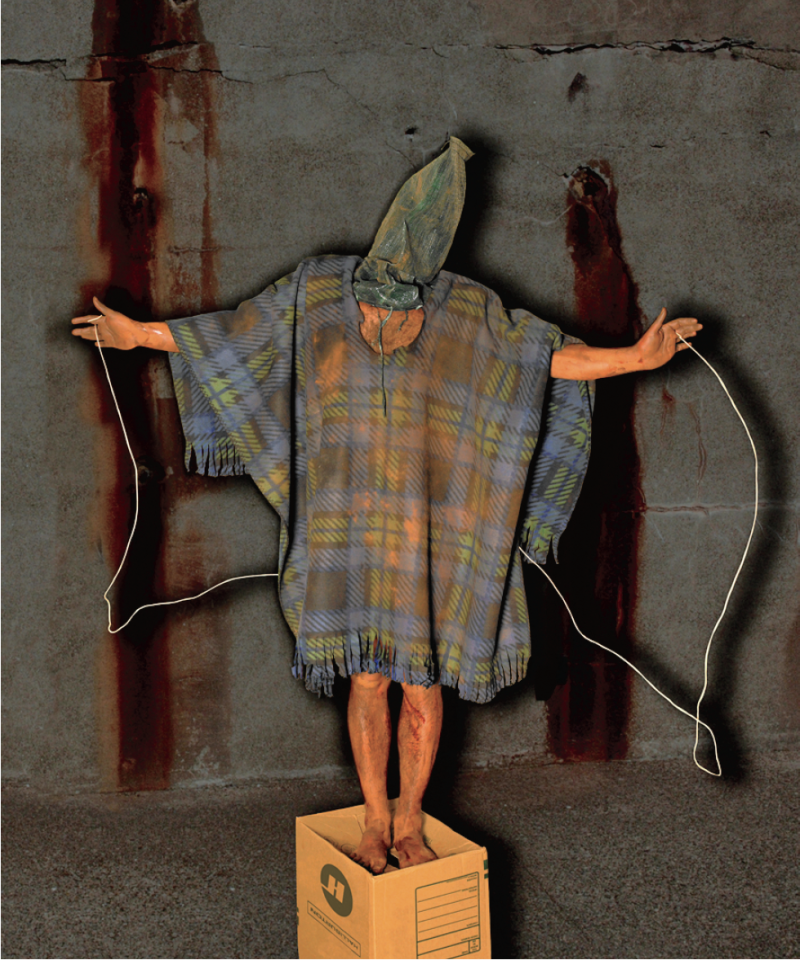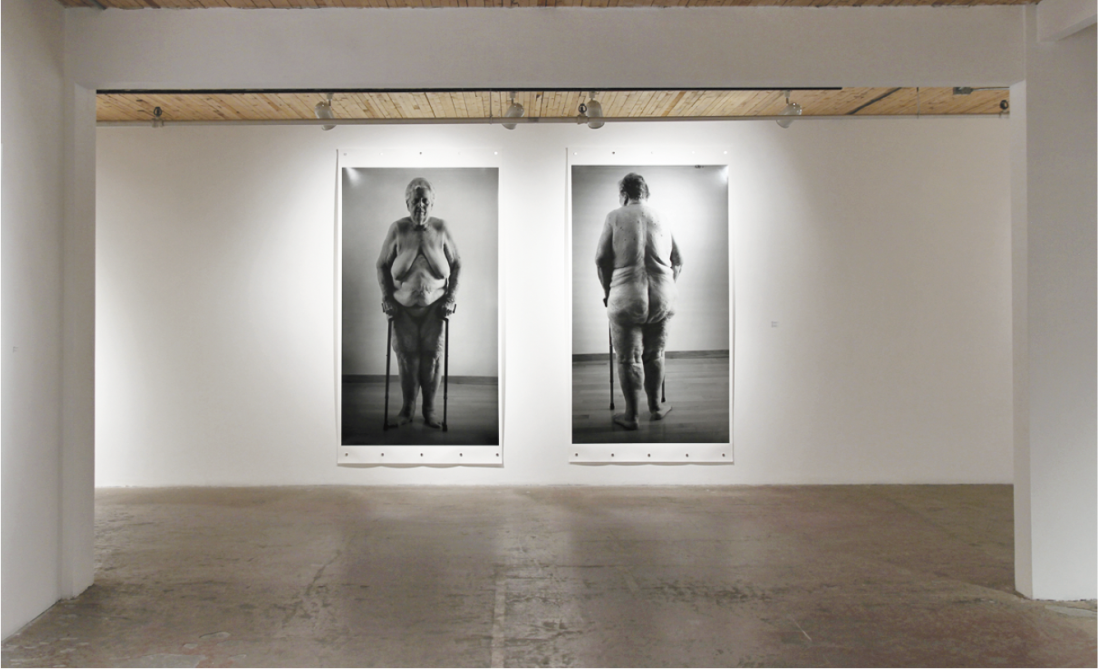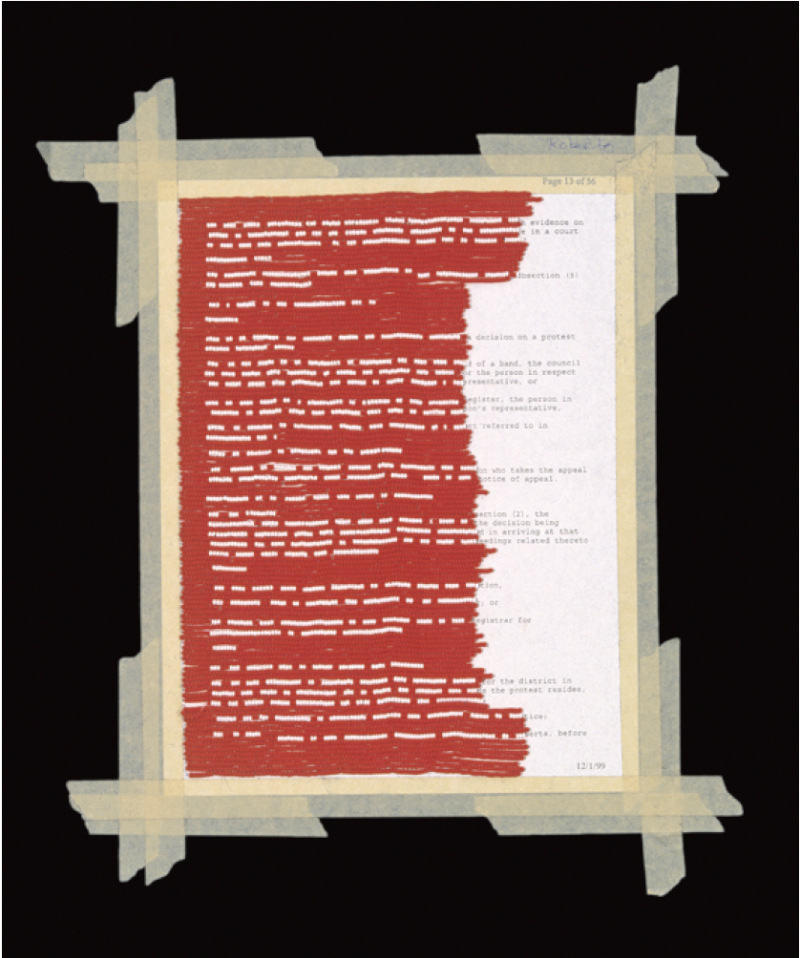“Please Lie to Me”

Susan Bozic, I Can’t Believe I Found My Match, 2005, C-print, 76 x 102 cm. Edition of 10. Images courtesy the artists and Art Mûr, Montréal.
November 2011 marked the 15-year anniversary of Galerie Art Mûr in Montreal. To celebrate, owners Rhéal Lanthier and François St-Jacques devoted the entirety of their gallery space—two levels of approximately 14,000 square feet—to exhibit the work of 21 artists drawn from an impressive international stable. The exhibition, “Please Lie to Me,” offers much commentary on the current state of contempor- ary art. Lanthier, in his curatorial statement, poses the question: “Est-ce que détourner son regard de la vérité est un mensonge? (Does averting your eyes from the truth constitute an illusion, a lie?)” In response, many of the works interrogate symptoms of our technologically dependent society. Several zero in on the inequality of the global market, the symbiotic relationship between the developed and developing geographic spaces of global capital, while others address the quotidian moment, one that is commodified, generalized to an accessible ubiquity that absolves the need for action in favour of awareness. If there is a common theme to the exhibition beyond Lanthier’s open call to reflect upon those truths of our society perhaps too difficult to bear, it is one that asks the viewer to participate, comment and reveal.

Clinton Fein, Snapshot Heard ’Round the World, 2007, Type C chromogenic print, 60 x 45”.
Karine Giboulo’s Democracy Village, a carefully executed mixed- media sculpture, places in proximity an often abstracted binary: the urban architectural monolith and the shanty-town slum. Phase I consists of an architectural form modelled after the Rem Koolhaas- and Ole Scheeren-designed CCTV (China Central Television Headquarters) building in Beijing. Installed atop the fractured, mirror-faced skyscraper is a golf course, while built around and in-between is a shantytown. Both appear parasitic, but through careful juxtaposition the new modern structure is revealed in its false neutrality. Above, the few enjoy a time of leisure; below, many sustain, build where possible and consume the leftover detritus of a consumer society dependent on market capitalism. A symptom is exemplified by the scrolling stock exchange numbers appended to this would-be triumphal arch—real-time fortune tellers of a new world order.
Visualizing the consequences of the global condition, Clinton Fein’s works re-picture the amateur aesthetic of documented prisoner abuse at Abu Ghraib. The works are intimate, finely crafted portrayals that mimetically encounter the way in which torture is romanticized and deemed acceptable under certain circumstances: ends justifying means by way of repetition. This affect of dissemination, how an image is internalized, subsequently played out in the corporeal and neutralized, is explored by Jonathan Hobin, who pictures children doing what they do best: playing out the social world around them as both coping mechanism and enculturation strategy. Thus, “In the Playroom” envisages children acting out so- cietal fears glorified by mass- media representation.

Evergon, Margaret Standing (Front), 2001, Margaret Standing (Back), 2001, selenium-toned black-and-white prints from Polaroid negative, 229 x 122 cm each. Photograph: Michael Patton.
In contrast, Susan Bozic situates herself in an image space where, alongside a male-mannequin, societal expectations are revealed. Consistent titles such as He let me pick the movie, 2005, Carl takes me to the nicest places, 2005, and I can’t believe I met my match, invoke the constructed nature of gender relations and the way in which expectation is developed through the repetition of institutional codes. Likewise, Dina Goldstein provides semiotic evidence about the bodily truth of augmentation. Belle, 2009, from the “Fallen Princesses” series, pictures the process by which a female client, appropriately attired in a fairy-tale outfit reminiscent of a Disney character, becomes animated.

Nadia Myre, Indian Act (page 13/56), 2000–2003, seed beads, stroud cloth, thread, Indian Act, 46 x 38.5 cm.
“Please Lie to me” explores the way in which the image, and by extension art, both aestheticizes and disassociates us from the naked truths of the world. Concomitantly then, the work of Evergon brings us face-to-face with an all too repressed symptom of the living condition: age. Printed in black and white and larger than scale is a portrait of the artist’s mother, Margaret. A stoic and deeply personal image, Margaret is pictured both facing and from the rear. Naked, the image invokes the strength of the human form, perhaps worn through time but nonetheless aware, determined, inquisitive. On the lower level, strewn across the gallery floor, is Renato Garza Cervera’s Of Genuine Contemporary Beast VI, 2005–2007, a simulated human-skin rug, replete with gang tattoos and fingers appropriately arranged to signify allegiance and set. The flayed corpse acts as a primal, som- atic representation of the ways in which people are rendered as a contemporary version of the Greek barbaros. Nearby, Nadia Myre’s “Indian Act” carefully overtakes, and makes its own, a document deter- mined to control, construct and represent. Beaded red and white, each page abstracts something that need not be repeated, nor glorified. Nonetheless, the reality is ours to bear. ❚
“Please Lie to Me” was exhibited at Galerie Art Mûr, Montreal, from November 5 to December 17, 2011.
Michael Rattray is a PhD Candidate in the Department of Art History at Concordia University, Montreal.

